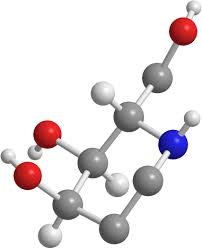Molecular nanodynamic structure of monolayer and multilayer nanotubes (PhD in nano-microelectronics)
Researcher and author: Dr. ( Afshin Rashid)
Note: Theory, modeling and simulation as a predictive design tool are widely used in the amplification and fabrication of dynamic molecules of SWCNT and SWCNTs nanotubes.
General methods capable of performing multiscale / multiphene molecular simulations for the design of SWCNT and SWCNTs nanotubes and new nanoscale systems and tools will be developed. Dynamic nanomolecular simulations will help in various fields such as biosensors, biosensors , filter design, as well as the dynamic identification of complex single-layer and multi-layer nanotube systems .
Deterministic molecular dynamics simulation: A method used to calculate the path of atoms or molecules used in multi-atom systems of more than ten atoms to several billion atoms.
Monte Carlo simulation (Stochastic): is a numerical method that tries to reach the final equilibrium state of the system by significant sampling of the nanomolecular state space. This method, based on the probabilities, approximates the configuration of the studied system to the energy conditions (Minimum) .
Initio Ab Molecular Dynamics : Initio Ab molecular dynamics, or quantum molecular dynamics, trace the motion of an atomic system by solving Schrینdinger equations and obtaining information on a subatomic scale.
Simulation methodology in molecular nanodynamics Nanotubes from the art of manipulating materials at the atomic or molecular scale and to making nanotubes and devices; Components and accessories have micro or nano dimensions and have nano-scale performance; Growth and proliferation of nanotubes and nanomaterials based on the manipulation of individual atoms and molecules in order to create a complex structure with different nanomolecular properties. In fact, most of the interesting phenomena observed at the nanoscale are due to the importance of the effects (quantum mechanics) and the properties of the wave versus the particle property (and surface effects).
In simulation methodology in molecular nanodynamics, nanotubes have the most complex effect of particle size on the magnetic properties of matter. A ferromagnetic mass material is characterized by magnetic fields that each contain thousands of atoms. In a magnetic field the direction of rotation of electrons is the same, but different magnetic fields have different directions of rotation. Magnetic phase change occurs when a large magnetic field aligns all magnetic fields. In the case of nanoparticles, for example, no specific magnetic fields are seen. Therefore, it is thought that there will be simpler systems in the structure of nanomolecules and materials; Small magnetic particles and even non-magnetic solids with small grain sizes show a new kind of magnetic properties. These properties are affected by the quantum property of particle size.
Conclusion :
The goal of the simulation methodology in molecular nanodynamics of nanotubes is to intervene in how atoms or molecules are arranged and to use materials and systems with new capabilities and new functions, all of which are the result of the specific amplification of molecules and particles. Nano is a device with small dimensions and nanostructure.
Researcher and author: Dr. ( Afshin Rashid)
PhD in Nano-Microelectronics





